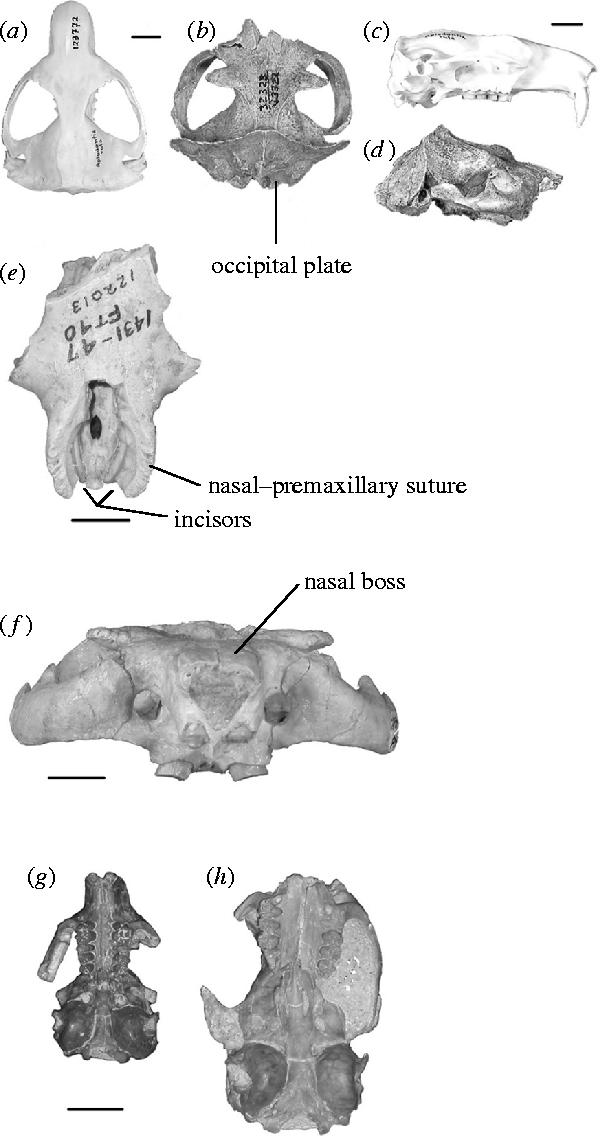Figure 3.

Features relevant to head-lift digging in aplodontoid rodents. (a) Skull of Aplodontia rufa, dorsal view, University of California Museum of Paleontology (UCMP) No. 123772, locality R0, a modern specimen. (b) Skull of Pterogaulus sp., dorsal view, UCMP No. 32323, locality V3322, Big Spring Canyon, Clarendonian NALMA, South Dakota. Same scale bar as (a). (c) Same as (a), lateral view. (d) Same as (b), lateral view. Same scale bar as (c). (e) Rostrum of Pterogaulus cambridgensis, dorsal view, University of Nebraska State Museum (UNSM) No. 122013, locality Ft-40, Cambridge Quarry, Hemphillian NALMA, Nebraska. The nasals are lost, exposing the extremely thick and complex nasal–premaxillary suture. The incisors can be seen at the base of the exposed narial opening. (f) Skull of an undescribed mylagaulid, anterior view, UCMP No. 316994, locality RV7619, Clarendonian NALMA, New Mexico, showing the thick nasal bones and the extremely broad, flat skull. (g) Skull of Meniscomys uhtoffi, ventral view, University of Washington Burke Museum (UWBM) No. 31451, locality UWA4556, Arikareean NALMA, Oregon showing the shortening of the skull between the M3 and the bullae. (h) Skull of Haplomys liolophus, ventral view, UCMP No. 1672, locality 898, Arikareean NALMA, Oregon, showing the much longer skull in this early aplodontoid. Same scale bar as (g). Scale bars are all 1 cm.
